
by John P. Pratt
26 Oct 2019, 1.VIII 7 REED (T), Skirt (S)
©2019 by John P. Pratt. All rights Reserved.
|
1. The Overself 1.1 Astral Parts 1.2 Subconscious vs Unconscious 1.3 Puppeteer 1.4 Identical Twins 2. Eternal Progression 2.1 Strawberries 2.2 Multi-Level Marketing 3. Pinocchio 4. Conclusion Notes |
Recent articles have summarized observations of the spiritual realm by a Tibetan sage[1] as well as beliefs of religions around the world that the spirit of man is twofold. One part contains the conscious logical rational mind (intelligence) and the other part the unconscious emotions and feelings (psyche).[2] Understanding those views helped take a first step toward reconciling the Eastern belief in reincarnation with the Western of living only one life and afterward being assigned to either heaven or hell. Harmonizing these apparently opposing perspectives resulted from many religions stating that after death the intelligence may return to experience multiple mortal probations as a human, whereas the psyche was the part that could be consigned to hell for correction or punishment. It is recommended to read both of those articles before this one because it builds on their foundation.
This article introduces a more advanced Tibetan belief that the intelligence of an individual is usually subservient to the Overself, which is like a controlling parent who is experiencing life through their child. While each of several mortal lives can be experienced by one Overself, even as a parent can have several children, there is also an identifiable individual living each life. At some point as that physical body and corresponding individual advances, it can itself progress to attaining Overself status, even as an adult child can break away from its parent and eventually also become a parent. It is noted that this type of progression is apparently represented in the multiplication of strawberries, in certain marketing structures, and in the story of the puppet Pinocchio.
Lobsang Rampa, the Tibetan sage mentioned above, spoke much about what he could actually observe, but did not always distinguish that from what his religion (Lamaism) taught. For example, he spoke of how the "astral body" (which he also called the "spirit" for his readers) usually is found inside of a living person, but during dreams it floats up out of the body and then zooms off into the "astral plane" to visit friends or otherwise dream. He describes sitting on the side of a mountain after sunset and watching these astral bodies float up above the homes and then fly away. In the language adopted in my work, the astral body contains both the individual's "intelligence" and also the influence of the "Overself".[3]
 |
The heart actually thinks, as in "as he thinketh in his heart, so is he" (Prov. 23:7). Modern research has confirmed that in the back area of the heart there is some very sophisticated neurobiological equipment for thinking.[5] This thinking done by the heart seems closely related to the thinking of the right hemisphere of the brain. It is the left half of the brain which processes all of the logical thinking and analysis, whereas the right half does all of the intuition and synthesis. This is very similar to the thinking done in the spiritual "heart". Rampa explains that in reality, the brain is just an electrical relay station which relays messages from the spirit to the body. One of its main responsibilities is to animate the body by sending electric impulses to the muscles.
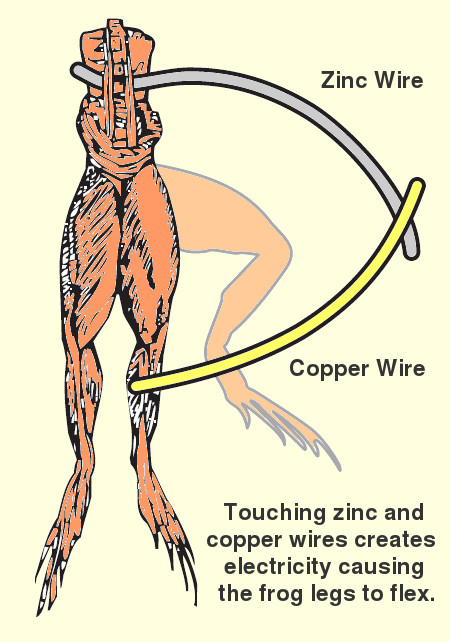 |
The third part is what the sage called the Overself, which is higher and not usually in direct contact with the person's mind. During life it is contained within the astral body (Rampa 3:92). The Overself is not shown in the illustration of the "Main Parts of a Soul" because it is technically not part of that individual even though it is in control of it, at least, until it matures and graduates from the cycle of reincarnation. Again, it is much like a parent has control over a child until it becomes of age. Rampa explained that most prayers are answered by the Overself. If the Overself is not able to answer and considers the petition worthy to be forwarded higher, the prayer can be sent up to God through a golden cord which connects the Overself to God (Rampa 9:151).[6]
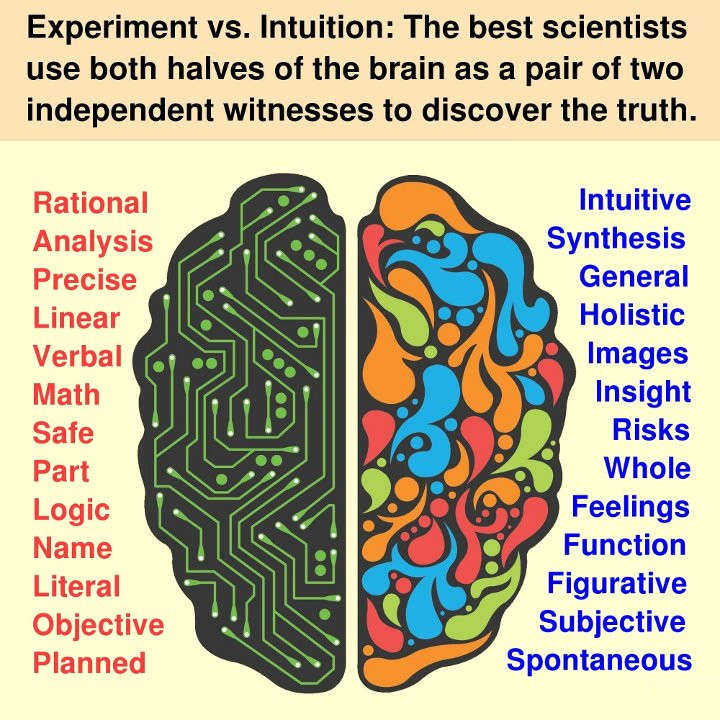 |
Thus, the Overself resides within the spiritual domain (astral body) of the individual during its mortal life, but it is not part of the individual "intelligence" as are the "heart" and "mind". It is like a guardian that resides within us. At first is hard to contact directly even as an infant cannot communicate with its parent.
The concept of the parent dwelling within seems related to when Jesus said that He would dwell within us (John 15:4-7, John 17:21-23). He is so close that He is actually within us.
Now it seems important to attempt again to match up some terms from different disciplines. In psychology, the "subconscious mind" refers to a part of the conscious that we are unaware of at the moment. Even though not in our immediate focus, it can influence us nonetheless, such as things that are heard, seen or remembered. The "unconscious mind", on the other hand, is a term to refer to a part of the mind that cannot be known by the conscious mind (at least that's what Freud thought), and includes socially unacceptable ideas, wishes and desires, traumatic memories and painful emotions that have been repressed.[7]
Comparing those definitions to the subject of this article, the subconscious of psychology and that described by Rampa are almost identical, with Rampa shedding much light on the subject. He said the subconscious is like a dim-witted librarian who didn't know everything personally but knew where to find the information desired. Similarly, like a librarian who can be contacted easily, a person can learn to deal directly with the subconscious to acquire information rather attempting to get it through prayer, which is always routed through the Overself, who is much harder to contact (Rampa 15:137).
Now combining that use of the word "subconscious" with our other terms, it seems to be represented by the "heart", in the sense of "thoughts of the heart". The heart is connected to all truth, which sounds a lot like the librarian. It is not used for logical analysis but instead can evaluate whether any proposition is true or not just by intuitively "knowing" directly. Hence, the spiritual "heart" is tentatively identified with the "subconscious".
On the other hand, the "unconscious" of psychology which contains traumatic memories and painful emotions sound likes a perfect match for the "psyche", which is in the etheric envelope, and which is the part of the spirit which can end up in hell suffering from precisely those unresolved feelings.
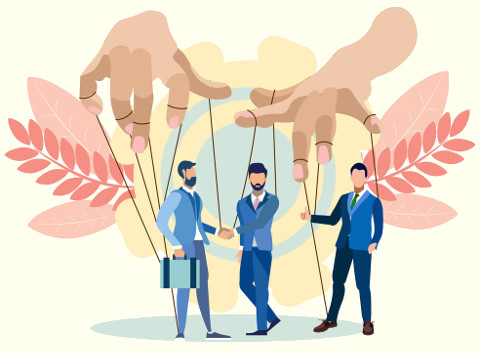 |
He explained that the usual case is for an Overself to only control one puppet at a time, that is, experience one incarnation at a time. It is not rare, however, that one Overself will speed up the process by controlling more than one at a time. He said that especially in these last days when time is short, with many wanting to clear out bad "karma" from mistakes in past lives, it is more common to have one Overself manipulate two or more puppets (Rampa 7:100, Rampa 9:38). Think about that! If true, that means that two different people could actually have the same Overself controlling them and essentially be like two copies of the same person!
Rampa gave an excellent comparison of how one Overself can handle several marionettes at once. He said that if the Overself controls more than one puppet, they are usually in a coordinated group such as a family or group of friends with a common interest. He compared each of those people (puppets) to being either a hand or foot on one person (Rampa 15:109). That person can skillfully control his hands and feet at the same time, even though each is actually a separate entity.[8] Thus, an Overself controlling several puppets is like a person controlling his hands and feet.
Note that all of this understanding from the Tibetan sage gives very little credit to the puppet for any intelligence whatsoever. He makes it sound like the Overself is the only intelligence involved and that the puppet is basically a throw-away puppet. The body of a deceased mortal was fed to the vultures and it was believed that the pysche (etheric body) dissolved, rather than going to the place Christians know as hell (in the case of those needing to reincarnate, not having been "born again"). Thus, he identifies the Overself as the "real person". As this research for this article progressed, it became clear that the Overself has the role of the parent and the puppet is the "real person", which has its own intelligence and personality. Thus, Overself parent and puppet child are both experiencing life together. That is very much like parents in this life on earth: they indeed experience life vicariously through their children, sharing their failures, rejoicing in their successes, and learning good parenting techniques to help guide them along their path. Parenting is a great way to learn to become more like God! This distinction being presented herein should be understood by the reader that the "parenting" role of the Overself was not taught by the Tibetan, but is only according to my interpretation of the facts (his observations).
 |
There have been studies done on amazing "coincidences" occurring with identical twins, widely separated at birth, who sometimes have never met each other. For example, separated twins both becoming editor of their high school newspaper, both breaking the same arm on the same slide on the same day, or both getting a perfect score on the ACT test. There was one case where identical twin sisters married identical brothers and later each gave birth to identical twins. Consider this one if you are not yet convinced that there is something here very difficult to explain:
And the identical twins who blow all other identical twin stories out of the water? Jim Lewis and Jim Springer. Born in 1940, the boys were adopted by separate families in Ohio, and grew up within 45 miles of each other. Both were named James by their adoptive parents. Both married twice -- first to women named Linda, and then to women named Betty. Both had children, including sons named James Allen. Both owned dogs named Toy. After reuniting in 1979, after 39 years of separation, the twins were recruited for a study, and the results of their tests were extraordinary. Their medical histories were identical, and the pair shared the same habits, including having woodworking workshops in their garages, a fondness for Chevys, and vacations on one particular beach in Florida. Beat that.[9]
Stop and think about that last one for a minute! If one tries to calculate the probability of all of those coincidences happening by chance, it would show that the odds against it make it virtually impossible. That was not all due to random actions. Their DNA did not contain instructions of what to name their children nor the names of their wives! DNA might explain health history or woodcarving desires, but not all of it. They are still individuals, each having agency to choose differently. Such examples have defied explanation. What possibly could explain any of those examples?
Now a simple explanation surfaces! The twins are actually run by the same Overself, the same overarching parental intelligence, that is, the same "higher person" making some of their choices! Suddenly all of the randomness disappears! If Rampa is correct, then the identical decisions of the twins can be explained by their having the same Overself!
One interesting aspect of Lamaism, the religion of the Tibetan, is the belief in eternal progression. That is, he believes that everyone is in a program of self-improvement where they can move up to higher levels of spirituality. Each person has agency, which is one of the most important universal laws (D&C 93:30-31), so they can learn to choose to improve and follow the "right path".
 |
One way for that to occur is that there be a program of eternal progression in place where the One whom Christians call "God" is actually progressing also. Jesus Christ progressed to where he attained to the Resurrection Himself. Thereafter, all who believe in Him are adopted by Him to be their God as spiritually begotten sons and daughters when they covenant to follow Him (Mosiah 5:7), as they themselves also progress up what might be called "Jacob's Ladder" (Gen. 28:12) of eternal progression.
The illustration of the caduceus suggests that the moment a "spirit" is born, when the intelligence and psyche are united at the raising of the Serpent Fire (spiritual rebirth), is when the Ida and Pingala channels to the Overself are shut down at that time, making the new spirit formed from that union completely independent from the nurturing Overself.
This moment is not to be confused with the birth of the intelligence itself. There were intelligences assembled before Adam came to this world to head this human family (Abr. 3:22). Those intelligences were composed of the eternal elements of light and truth (D&C 93:29-30), and according to the understanding presented in this article, those elements were formed into intelligences by two Heavenly Parents, becoming their children. Those intelligences had what is called a heart (truth) and mind (light). Then in coming to earth those intelligences were connected to a body at its physical birth. A psyche was also created for that mortal probation and it was also connected to the physical body at quickening. But the intelligence and psyche were not yet connected to each other, except through the Ida and Pingala channels in the spinal cord which provided sustaining life from the Overself (John 15:4-5). At the moment of spiritual rebirth, required to enter the Kingdom of God and to graduate from the cycle of reincarnation, the Serpent Fire shoots up the center channel to connect the upper intelligence to the lower psyche to create a "spirit". At that time the Ida and Pingala channels close down, and the person is spiritually mature and no longer controlled by the Overself. That is similar to how the umbilical cord is severed at the physical birth, when a new, separate living soul is created.
Let's consider two propagating and progressing methods which may help us understand such a system. Note that a key element of both is that the propagation method not only allows a new start to begin and grow, but that the fledgling can attain to the same level of success as the parent and continue to thrive after completely breaking off from the parent.
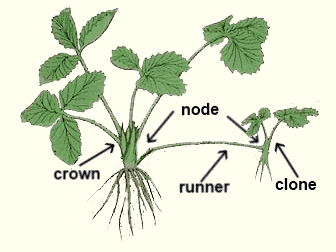 |
Someone concerned about an individual strawberry plant might wish to think about exactly when a new plant cloned from a runner becomes its own individual self. As long at it is connected to the mother plant, she can claim that the new one is technically still part of her body, but once the runner cord is cut, it is definitely separate. It could be said that it is "born" at that time.
It might be the same with the progression of an intelligence. When graduating from the cycle of reincarnation, when the psyche becomes permanently attached to the intelligence to form what will be a glorious spirit in paradise,[12] that might be when it graduates to become a totally independent individual. Later, most likely after resurrection, that spirit can become an Overself (parent), even as the cloned strawberry plant can become an independent, fruit-producing plant, able to send out new runners.
There are several excellent multi-level marketing (MLM) systems, which are far different from pyramid schemes. The latter are scams to steal investors' buy-in cost. An MLM system may not even require require buying a starter kit at all, but may simply allow a person to become a new "distributor" to sell the product without an initial investment. That product is usually obtained from someone one level up who stocks a certain amount of product for those started by them. The person above them gets a percentage of the profit, and the person even higher who started them also gets a percentage if they are still active. The person higher up who started them, or grandfathered them, has a whole storehouse of product for all those in the network under him. In the system familiar to me, when someone had arrived at a certain level of sales volume they broke off entirely from the chain above them. In other words, the system allows a person to begin with nothing just by selling a product he genuinely likes, who by much labor, including training new distributors under him, can work up to be a supervisor making enough money to easily sustain a family.
This seems similar to what "Jacob's ladder" might be all about. Jesus Christ may indeed have attained the level such that He becomes the "God" of those who choose to follow Him, even as someone above us in MLM marketing could meet the requirements to become our new "Supervisor" in MLM sales. When someone drops out of the MLM system, their branch is pruned off, and those below are "adopted" or "grafted in" to the person above, so the system handled drop-outs with no problem. There is much in the scriptures about "grafting" in other "branches" to the tree in a similar manner (Rom. 11:17).
What is the most translated non-religious book of all time? Would you believe that according to Wikipedia as of October 2018 it is The Adventures of Pinocchio (1883)![13] It has been translated into over 300 languages!
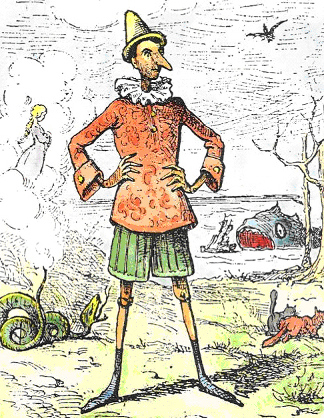 |
A poor puppeteer named Geppetto (Joseph), in hopes of earning a "crust of bread and a glass of wine", carves a block of pine wood into a boy and names him "Pinocchio" ("Pine Eye"). Even while being carved the boy is rebellious. A talking cricket who has lived for a century in the home warns him of the peril of disobedience and Pinocchio kills the cricket.
Pinocchio promises to attend school and Geppetto sells his only coat to buy him a school book. On his way to school he sells his book for a ticket to the marionette theater. He receives five gold pieces to take home to his father, but is conned out of them by a fox and a cat. A blackbird tries to warn him of their lies, but to no avail. Later as Pinocchio was passing the city of Catchfools, the fox and cat ambush and rob him, even though he was warned by the cricket's ghost. They hang him from a tree but he is rescued by a fairy with turquoise hair (actually the ghost of a recently deceased woman) who summoned a falcon to get him down. When he lies to the fairy about how he lost the gold coins, his nose grows long. The fairy explains that it grows when he lies.
Geppetto builds a boat to search for Pinocchio and is swallowed by the Dogfish Sea Monster. Meanwhile the fairy turns into a woman who acts as Pinocchio's mother. She promises that if he does well in school that he can become a real boy. He goes to the top of his class but is sidetracked on the very day he was to become real to go to Toyland where everyone plays and never works. There he eventually awakens with donkey ears, whereupon a dormouse tells him nothing but play will turn him into a donkey. He becomes a donkey and is thrown into the sea to drown, but the fish ate off the donkey skin so he was again a puppet. Then the monstrous Dogfish swallows him too, where he discovers Geppetto still alive. Pinocchio works and saves 40 pennies, and gives them all to save the fairy who is sick. That night he dreams he is visited by the fairy who kisses him. He awakens as a real boy at last. His former puppet body lies lifeless on the chair. She left him a new suit and 40 gold pieces.
It is left as an exercise for the reader to see if there are enough correspondences to the Overself and reincarnation theory to believe this children's story is inspired by truth, or is it merely a story to teach children to behave. My twenty points of correlation are listed in the endnotes, which led me to the conclusion that the story indeed was intended to symbolize graduating from being controlled by an Overself puppeteer.[15]
First, the understanding of the various spiritual parts of a human introduced in earlier articles was reviewed and then extended by noting that the immortal intelligence itself has two parts, sometimes called the "mind" and "heart", which can send messages to the two halves of the brain. Then these terms are related to the "subconscious" and "unconscious" terms from psychology.
The Tibetan concept of the "Overself" is introduced. It is the higher being which controls the physical body by means of a "silver cord" which can be compared to the strings which control a marionette puppet. The Overself resides within the astral (spiritual) body of the individual and functions like a guiding parent raising a child. The Overself can be the intelligence advising more than one mortal life at a time simultaneously, even as a parent can have several children. The Overself usually controls just one person, but the case of identical twins is an example where very often the same Overself could be controlling both twins. This concept provides a simple solution to the otherwise inscrutable mystery of how identical twins, separated at birth, can lead such amazingly parallel lives.
The concept of the Tibetan view of eternal progression is discussed: any person can spiritually progress to be able to someday attain what could be called "godhood" by continually improving himself. The method, which involves cutting the cords which connected one to a nourishing and guiding "parent" (Overself), can someday be severed, as the person has his own parts develop to become self-sufficient.
The process is compared to how strawberries send out runners to start new plants, which eventually become mature so that the runner is no longer needed for nourishment. The process is also compared the MLM marketing where a new salesman of a product can work up to become a supervisor who entirely breaks off from those above him, who taught and nurtured him to help raise him up. It was suggested that this might explain how those who accept Jesus Christ become his "children" because He gets promoted for having been the Savior and Redeemer of those who believed in Him.
Finally, a correlation of many of these distinct teachings are compared to the story of the puppet Pinocchio, who eventually was able, by doing well in "school", to have his strings disappear and become a "real boy". It was concluded that there were too many correspondences to ignore and that the story indeed was intended to symbolize the ascent of mankind by beginning as a puppet and progressing with the parental guidance of his "father" Geppetto, representing his Overself.
Thus, the concept of an Overself helps to explain eternal progression, where what was once a puppet can develop into another Overself and continue to progress eternally according to a plan of salvation provided by an infinitely wise Creator.